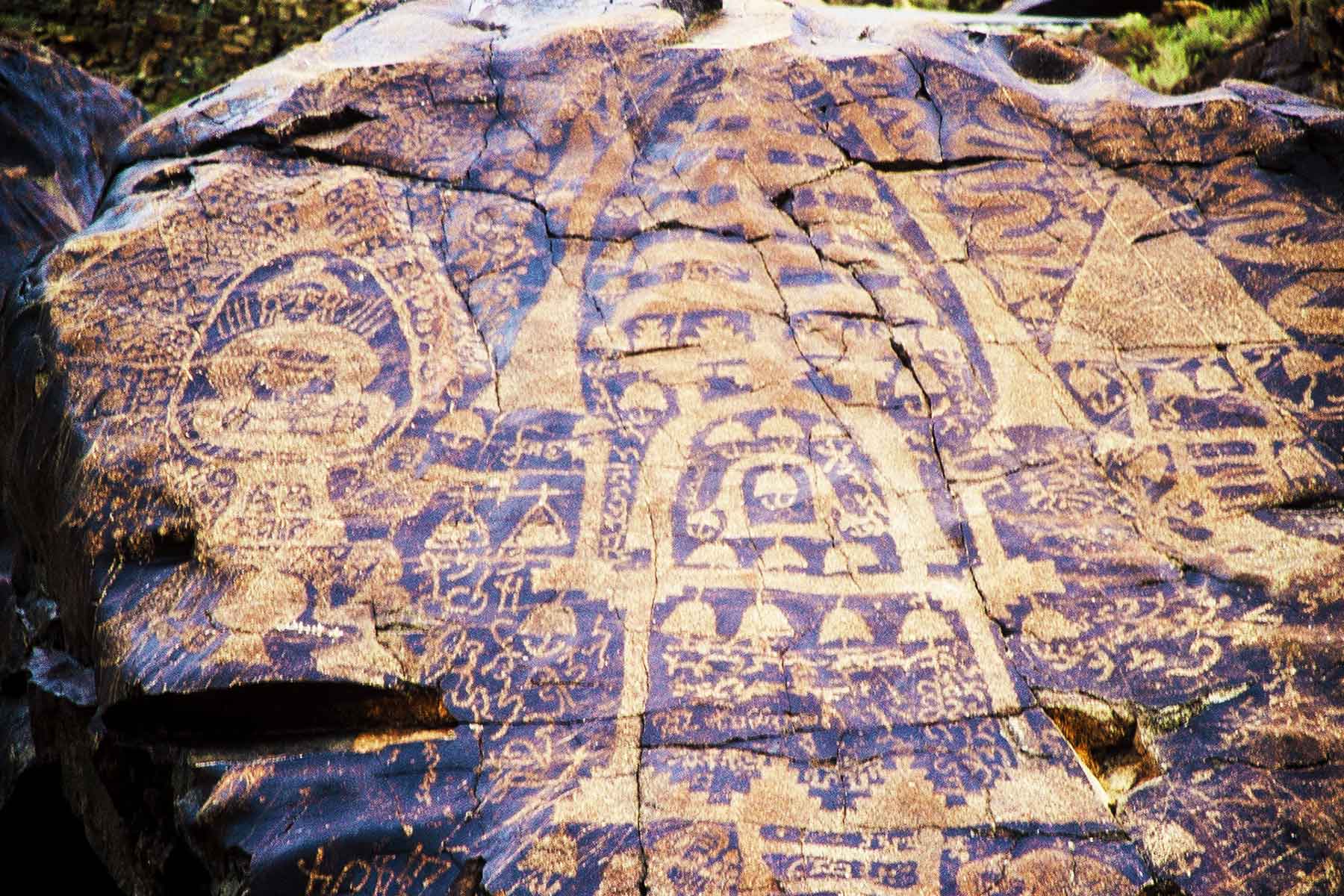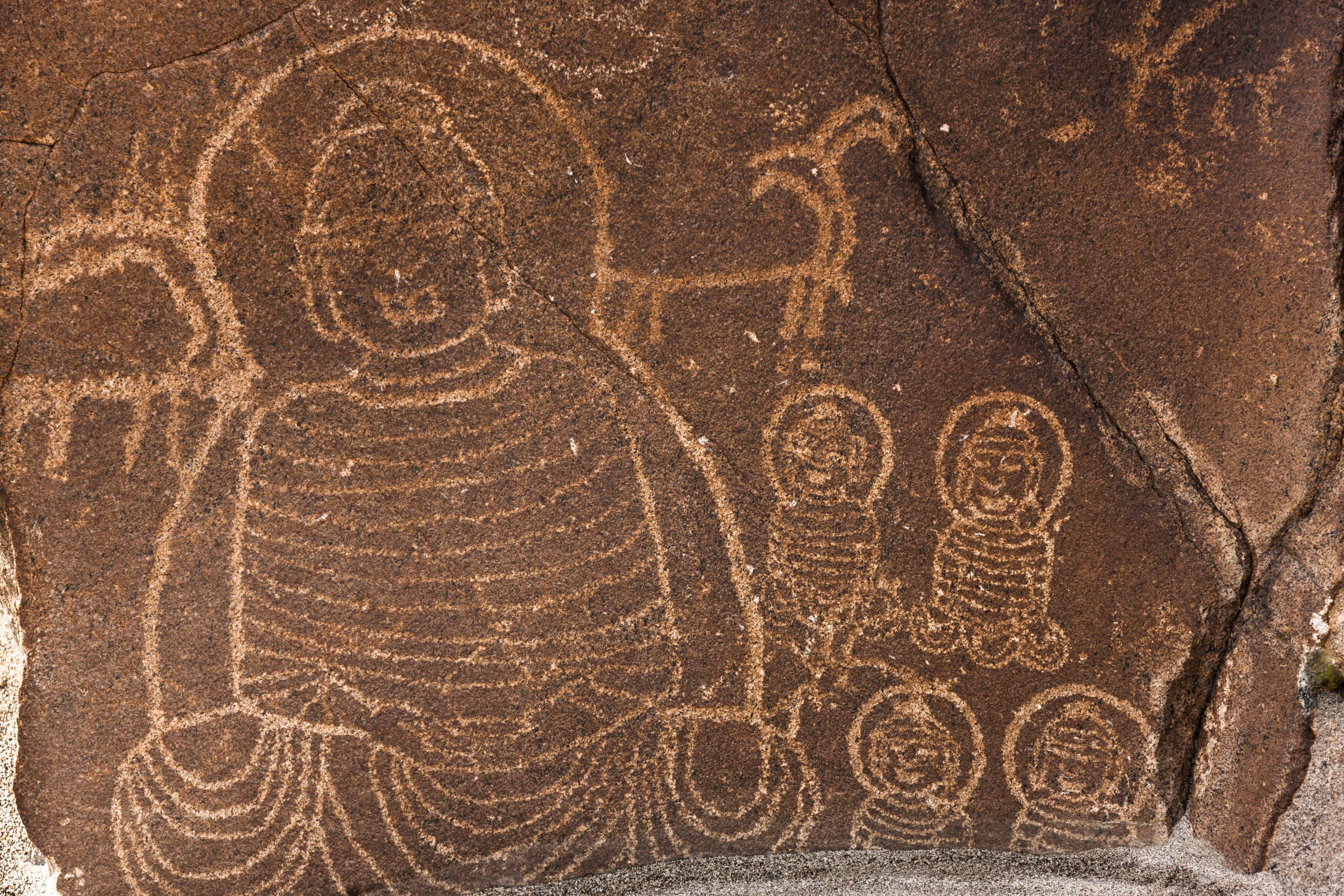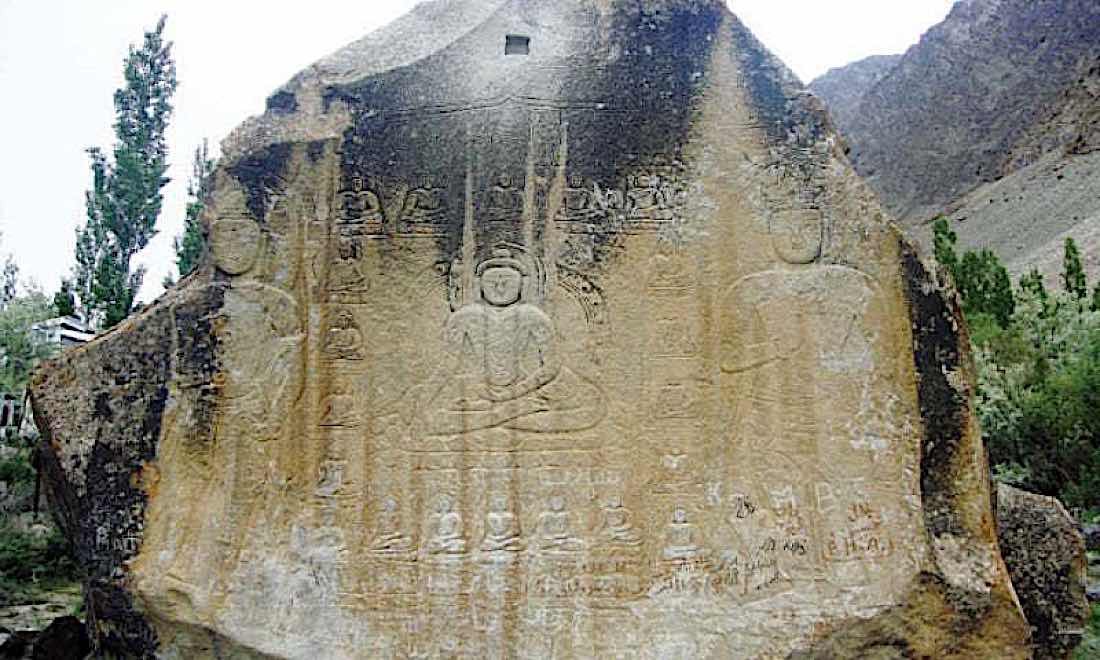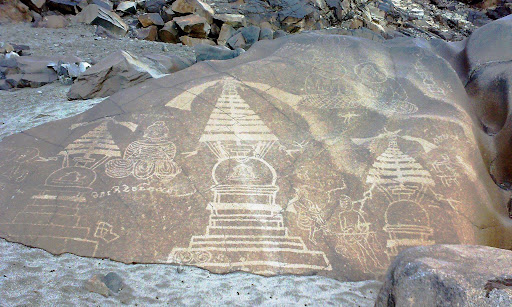The Buddhist Rock Art of Pakistan

It was 1884 when Karl Eugen, a Hungarian traveler, discovered a Buddhist carving in present Baltistan, and it was just the beginning of a series of Buddhist rock art discoveries in Pakistan. In 1907, a veteran explorer, Ghulam Muhammad unveiled another Buddhist petroglyph from the Diamer district.
When the 750 km long Karakorum Highway (the modern Silk Road) was inaugurated in 1978 thousands of more engravings came to view, inspiring a German scholar named Karl Jettmar to further explore the rock art of the area.
In 1980, Karl Jettmar and Pakistan’s father of archaeology, Ahmed Hassan Dani, launched a Paki-German study group to systematically investigate the ancient rock art in the region.
Another research project entitled “Rock Carvings and Inscriptions along the Karakorum Highway” was initiated in 1983. The Heidelberg Academy of Humanities and Sciences and the Department of Archaeology of Gilgit was responsible for the study group. Professor Harald Hauptmann has been the head of the project since 1989 as a successor of Jettmar.

The Buddhist rock art of Pakistan displays hundreds of inscriptions in Brahmi, Sogdian, middle Persian, Chinese, Tibetan, and even ancient Hebrew languages. Some 80 percent of the writings are in the Brahmi language.
One of the interesting Brahmi inscriptions can be read as; Martavyam Smartavyam, which means: “(Always) remember that (one day) you must die.”
The earliest rock carvings in northern Pakistan dates back to the ninth millennium BCE (roughly the late Stone Age).

The following Bronze Age petroglyphs represent the most spectacular carvings of giants. Some 50 such carvings have been discovered in northern areas but all the giants have no facial features.
In the third millennium BCE, agriculture started in the region, and carvings of horses were observed for the first time. Then at the beginning of the first millennium BCE, the area witnessed invasions by new ethnic groups such as the Sakan tribes. They carved sketches of Eurasian animals, most of them very interesting, bizarre, and mythical in nature.
Later, another bunch of carvings appeared representing more mythical creatures, horses, and warriors with Persian attire. These depicted the Iranian influence in the region and the expansion of the Achaemenid Empire in the sixth century BCE.
In the first century AD, Buddhism emerged in the area as a new belief system and reached its peak between the fifth and eighth centuries. Many spectacular carvings of Buddha and stupas – sacred buildings – and related inscriptions were found carved in the same era.
Multiple times the Buddha himself was depicted as a giant compared to the other figures surrounding him, and the stupas really resemble some kind of device rather than a temple, for their size and their features, matching the accounts of how the Vimana was structured in the Hindu mythology.

Unfortunately, Pakistan’s energy crisis led to the development of the Basha Dam, a dam that would help to bridge the gap between the demand and supply of power, but that would also cause thousands of petroglyphs and drawings to be inundated.
